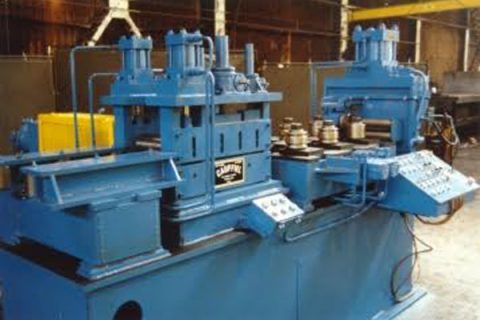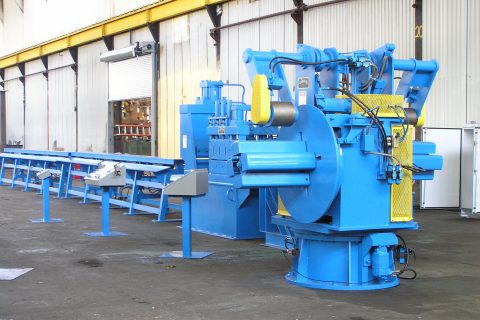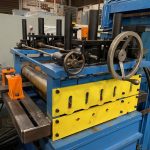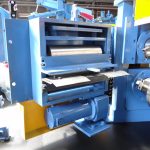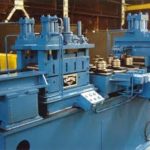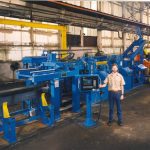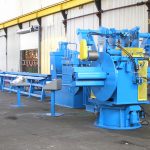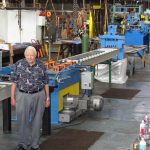The edging process involves placing the edge of slit material, or edges of sheared bar under tremendous pressure between two or more sets of round dies, either to remove a burr caused by upstream processing or to impart a desired shape at the edge. Sometimes the edging process is done for safety reasons due to the potential of cutting your hands because of a sharp edge. One example is a lawn mower blade or a roll formed fence post. It might also be used in drawer tracks or seat tracks in an automobile. Another reason an edging line might be used is for cosmetic appeal in a stainless steel table or fixture.
The shape of the edge is controlled by creating a specific machined profile into sets of hardened and ground alloy steel rollers. Multiple pairs of rollers, sometimes driven in the case of heavy gauge material, progressively contour the edge until the final result is achieved. ASP edging lines have dual grooved rolls so changing from one thickness to another is easily accomplished by rotating over the roll sets of dies to use the other grooved section. Our edging system can be a stand-alone unit for sheared bar to finished edged bar or slit coil to edged bar (and cut to length) or coil to coil edging for high production. For the ultimate in high productivity, a flying shear can be added to cut to length an very high speeds feeding a dual stacking unit. Many service centers enjoy our edging lines as they can take obsolete inventory or edge cuts and edge drops from a slitting operations and turn them into more lucrative and salable products. Our line-up of edger’s can accommodate from 1” to 48” wide, .040” to .625” thick, in material up to 50,000 psi yield strength, in speeds up to 250 FPM.

